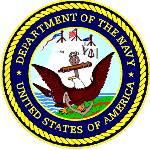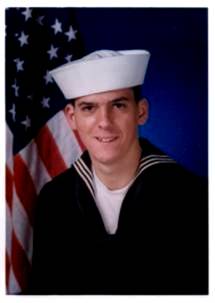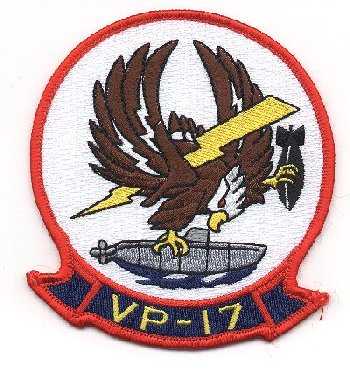Mark de Socio
US Navy, 1987-1994


Mark de Socio
US Navy, 1987-1994


I enlisted in the US Navy immediately after graduating high school in June 1987, mostly for the GI Bill, but also to "see the world."

I attended boot camp in Orlando, Florida, in Dec. 1987, a full six months after joining the Navy. The "Delayed Entry Program" accounts for the delay. Following boot camp, I moved on to Aviation Storekeeper (AK) 'A' School at the Naval Technical Training Command (NTTC) in Feb. 1988. NTTC was housed at the Naval Air Station, in Meridian, Mississippi. From there, I moved on to Patrol Squadron Seventeen (VP-17), a squadron comprised of large 4-engine turbo-prop "anti-submarine warfare" airplanes (the P-3) that are too big for aircraft carriers and, consequently, must be deployed to land-based air stations. VP-17 flew out of Naval Air Station Barbers Point, Hawaii.
I met up with the squadron which was about two weeks into its six-month deployment to Cubi Point, Philippines. For the first few weeks I was on so-called "fire watch" at the squadron barracks, meaning I sat by the telephone and relayed messages to people I didn't know (Yeah, it was boring). I then started my actual job as an Aviation Storekeeper (or 'AK'), where I worked the all-night shift. We worked 12-hours-on / 12-hours-off for the duration of the deployment.
 The Philippines was definitely a neat place to be. Olongapo, the town outside of the greater Subic Bay Naval Base that included the Cubi Point air station, was a thriving little town. It's economy was, unfortunately, almost entirely built around the naval base, meaning it was full of bars, hookers, con men, street venders, cops, and drunken, swaggering, belligerent American sailors and marines. I made it my mission to escape from the immediate proximity of the base and venture out into the farther reaches of Olongapo and various other nearby towns such as Subic and Barrio Barretto.
The Philippines was definitely a neat place to be. Olongapo, the town outside of the greater Subic Bay Naval Base that included the Cubi Point air station, was a thriving little town. It's economy was, unfortunately, almost entirely built around the naval base, meaning it was full of bars, hookers, con men, street venders, cops, and drunken, swaggering, belligerent American sailors and marines. I made it my mission to escape from the immediate proximity of the base and venture out into the farther reaches of Olongapo and various other nearby towns such as Subic and Barrio Barretto.After deployment, the squadron returned to Hawaii where I, being the junior guy in the workshop, was exiled to the air station's supply department and became an aircraft parts delivery driver. But not before working for a couple of months each in the squadron's Coffee Shoppe and as a porter "swabbing" and waxing the "decks" all night. After nearly nine months of the graveyard shift, both as a porter and parts delivery driver, I came back to the squadron's Material Control Unit where the 'AKs' worked as the squadron geared up for another 6-month deployment, this time to Adak Island, Alaska (in the Aleutian Islands chain). The pictures you see are of Adak.

It wasn't my intention to stay in the Navy beyond my three-year enlistment, but I had made Petty Officer Second Class (or, "PO2" for short; PO2 is the equivalent of "sergeant" in the other military branches - I think) which meant pretty good pay for a working class 21-year-old. Plus, as a PO2 on "shore duty," I was all but guaranteed a day-shift "supervisory" position in which I could attend college at night. I went ahead and extended for another 3 years so that I could earn some money while attending college. Naturally, the Navy got in the way on some occasions, so it took 3 years to complete a 2-year degree, but by the time my enlistment was up again I had the GI Bill to take me the rest of the way.
I transferred to the Supply Department at NAS Barbers Point. During my stint there, I went on a mini-deployment to Guam for 3 weeks for a typhoon relief operation. Guam is like a mini-Hawaii and one of the world's best-kept secrets. Some awards I got while at Barbers Point include a Navy Achievement Medal and Sailor of the Year for the Supply Department's Aviation Support Division (in 1993, I think). More importantly, I spent a lot of time surfing during my second tour, which made my stay in Hawaii simply amazing.
I left the Navy - and, sigh, Hawaii - after six years to complete college and to get on with life.



